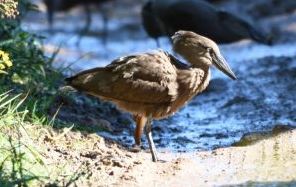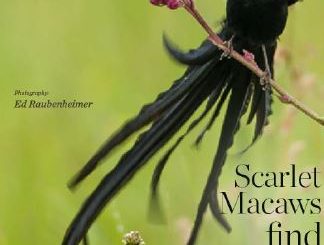Rondebult bird sanctuary : Birding endemics, Birding habitats, Seasonal tips
Rondebult Bird Sanctuary is a notable birding destination located near Germiston, Gauteng, South Africa. It’s an excellent place for birdwatchers and nature enthusiasts to observe a variety of bird species in their natural habitat. Here’s an overview of what you can expect in terms of endemic species, birding habitats, and some tips for visiting throughout the seasons.
Access to Rondebult Bird Sanctuary
Location
- Address: The sanctuary is located just outside Germiston, in the Rondebult area of Gauteng, South Africa. It is approximately 25 kilometers southeast of Johannesburg, making it easily accessible for day trips.
Directions
- By Car: From Johannesburg, take the N17 highway towards Springs. Take the Heidelberg Road/R103 exit and continue on this road until you reach the sanctuary. The entrance is well-marked, and there is parking available for visitors.
- Public Transport: Public transport options may be limited, so driving is usually the most convenient way to reach the sanctuary.
Opening Hours
- Hours: The sanctuary is generally open to the public during daylight hours. It’s advisable to visit early in the morning or late in the afternoon when bird activity is highest.
- Entry Fee: There may be a small entry fee to help with the maintenance and conservation efforts of the sanctuary. It’s best to check in advance for the latest information on fees and opening times.
Facilities at Rondebult Bird Sanctuary
Birding Facilities
- Bird Hides: The sanctuary is equipped with several bird hides strategically placed around the wetlands and ponds. These hides offer excellent vantage points for observing and photographing birds without disturbing them.
- Walking Trails: There are several walking trails that meander through the sanctuary, allowing visitors to explore different habitats and observe a wide variety of bird species. Trails are generally easy to navigate but may vary in condition, especially after rain.
Visitor Amenities
- Picnic Areas: Designated picnic areas are available for visitors to enjoy a meal amidst the natural surroundings. These areas are perfect for taking a break and soaking in the tranquility of the sanctuary.
- Restrooms: Basic restroom facilities are available for visitor convenience.
- Guided Tours: Occasionally, guided birdwatching tours and educational programs may be offered. These can provide valuable insights into the bird species and ecosystems within the sanctuary.
Birding at Rondebult Bird Sanctuary
Endemic and Notable Bird Species
While Rondebult may not have a high number of strictly endemic species, it is a great spot to see a variety of South African and southern African birds, some of which may be regionally significant or near-endemic. Some of the notable species you might encounter include:

- African Sacred Ibis
- African Spoonbill
- Hamerkop
- White-faced Whistling Duck
- Southern Red Bishop
- Pied Kingfisher
- Malachite Kingfisher
- African Jacana
- Greater Flamingo (seasonal)
- Lesser Flamingo (seasonal)
Rondebult Bird Sanctuary Birding Habitats
Rondebult Bird Sanctuary offers diverse habitats that attract a wide range of bird species:
- Wetlands: The sanctuary includes several large ponds and marsh areas that are ideal for waterbirds such as ibises, herons, egrets, ducks, and flamingos. These wetlands provide feeding and nesting opportunities for aquatic species.
- Grasslands: The open grassland areas support species such as larks, pipits, and various seed-eating birds. These areas are also good for spotting raptors like the Black-shouldered Kite.
- Woodland and Bushveld: The surrounding vegetation includes patches of bush and trees where you might spot species like the Southern Masked Weaver, Southern Red Bishop, and various doves and pigeons.
Seasonal Birding Tips
Summer (November to February)
- Migratory Birds: Summer is a great time to see migratory birds that come to the sanctuary to breed or feed. Look out for waders and other waterbirds that arrive for the rainy season.
- Breeding Activity: Many local birds are breeding during this time, so you might observe nesting behavior and fledglings.
Autumn (March to May)
- Transition: As migratory birds start to leave, the sanctuary remains vibrant with resident species. This is a quieter time with fewer crowds, ideal for peaceful birdwatching.
Winter (June to August)
- Resident Birds: While some species may be less active, you can still enjoy watching resident birds, particularly those adapted to the cooler weather.
- Flamingos: This is a good time to potentially see greater and lesser flamingos, as they may gather in larger numbers.
Spring (September to October)
- Return of Migrants: Early spring marks the return of migratory birds, and many species become more active with the warming weather.
- Breeding Season Begins: Birds start to prepare for the breeding season, so you may witness courtship displays and nest building.
Visiting Tips
- Timing: Early morning or late afternoon is often the best time to visit for optimal bird activity and comfortable weather.
- Equipment: Bring binoculars and a camera with a zoom lens for capturing bird sightings. A field guide or birding app can help identify species.
- Footwear: Wear comfortable walking shoes, as some trails may be muddy, especially after rain.
- Quiet Observation: Move quietly and slowly to avoid disturbing the birds. Patience and a keen eye can lead to rewarding sightings.
Rondebult Bird Sanctuary offers a serene and rewarding birdwatching experience with a variety of habitats and species to explore. Whether you’re a seasoned birder or a casual nature lover, there’s always something new to discover at this sanctuary.
Other birding spots to discover in Gauteng:


